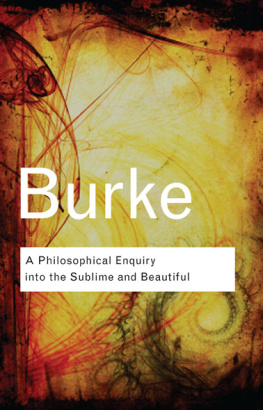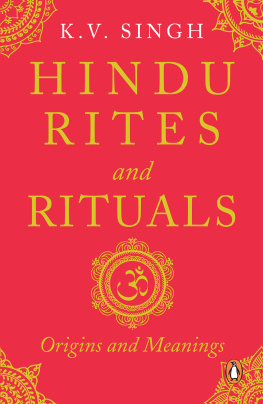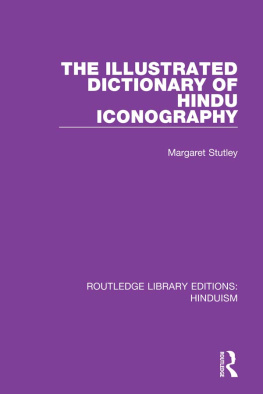A Historical and Philosophical Enquiry into the Hindu Rite of Widow-Burning
This last proof of the perfect unity of body and soul, this devotion beyond the grave, has been chosen by many of our Western critics as our reproach; we differ from them in thinking of our suttees not with pity, but with understanding, respect, and love. So far from being ashamed of our suttees, we take a pride in them; that is even true of the most progressive amongst us. It is very much like the tenderness which our childrens children may some day feel for those of their race who were willing to throw away their lives for their country, right or wrong, though the point of view may seem to us then, as it seems to so many of us already, evidence rather of generosity than balanced judgment... For some reason it has come to be believed that Sati must have been a man-made institution imposed on women by men for reasons of their own, that it is associated with feminine servility, and that it is peculiar to India. We shall see that these views are historically unsound. It is true that in aristocratic circles Sati became to some degree a social convention, and pressure was put on unwilling individuals, precisely as conscripts are even now forced to suffer or die for other peoples ideas; and from this point of view we cannot but be glad that it was prohibited by law in 1829 on the initiative of Raja Rammohun Roy. But now that nearly a century has passed, it should not be difficult to review the history and significance of Sati more dispassionately than was possible in the hour of controversy and the atmosphere of religious prejudice. Ananda Coomaraswamy, The Dance of Siva, published 1924, 91-2.
The devotion of Alcestis! Assuredly the heroic unselfishness of woman is a beautiful thing; and I warrant you that, the gods helping me, Alcestis shall take no injury from my hands. But what of Admetus as a husband? That is an aspect of the matter upon which our hymnists and our congregations are little disposed to dwell, and they find no difficulty in ignoring it. It belongs to the skimble-skamble thinking which aids and is aided by faith in these monstrosities never to see anything steadily, never to see anything whole, but only such parts as please. And your heroic tragedy is beloved for flattering this habit. But there are flatterers enough; and, for my part, I intend to give you much more of Admetus than of Alcestis. He is much better for you. You are accustomed to rest with complacency on the picture of the self-sacrificing woman as the ideal of wives. For herself she deserves such admiration, but for men and for society, no! I should like to make you feel, and I mean to try, what a blind, barbarous, self-defeating selfishness is at the bottom of all this rapture about the devotion of woman. You will say that the women join in it. But what sort of women? What are the women bred by our system of semi-humanity but the most dangerous of our slaves? Prohibited by your generosity from acquiring intelligence except at the cost of respect, the poor creatures are so dull that they cannot even distinguish a friend from an enemy. Your magnanimous satirists have no difficulty in directing the almost unanimous resentment of the sex against whoever dares to see and show what mischief to themselves and to us results from their ill-governed virtue not less than from their ungoverned vice. I pity Alcestis, and I pity her husband. What would she make of him? What does she make of him? A. W. Verrall, Euripides the Rationalist, 118-19 (Euripides is supposed to be speaking).
It is a strange commentary on the magnanimity of men that they should seek their deliverance through the self-sacrifice of their wives. Akbar, quoted by Abul Fazl in Happy Sayings of His Majesty (Ain-i-Akbari, Institutes of Akbar), Jarret, iii. 398.
Preface
I suppose the impulse to write this book dates back to my shame and anger in India when men and women of my own race extolled suttee, and the amazement with which I first saw the memorials of Hindu kings, with the sats crouching forms. But the impulse was slight, and would have slept but for a publishers interest. Messrs. Allen & Unwin passed on to me questions asked about suttee by their reader when reporting on my share in Three Eastern Plays. Receiving my reply, they suggested that I should write an Essay on Suttee. I said I would; but the essay at once got out of hand and became a monograph. I found with surprise how slight was the attention given in any language, Indian or European, to the subject, and how loose and erroneous were many statements of even the best historians. Our ignorance of what is commonplace and pervading in the atmosphere and background of Indian thought justified the slight terminal essay that appeared as an appendix to Three Eastern Plays; but the necessity was unfortunate, for reviewers assumed an afterthought as a first cause, and said the plays were about or even against suttee.
The late Lieutenant-Colonel C. Eckford Luard, C.I.E., helped me with discussion and information. His death was as heavy a loss as any that Indian scholarship has suffered in recent years, and to his friends a thing hard to be borne.
The picture of Chitor is reproduced from Tods Rajasthan, by courtesy of the Clarendon Press; the other three illustrations are reproduced from Government of India publications, by courtesy of the High Commissioner for India. I acknowledge these favours gratefully. Part of Chapters VI to VIII appeared in the London and Edinburgh Quarterlies.
Except when a misspelling was so well established that accuracy would have been pedantry, I have used the orthography accepted by scholars. But the authorities whom I quote made shots at transliteration which resulted in a wide range of variation. My printers, noting this, have been at pains to correct many of these mistakes; and I have been too tolerant, when they have done this, to restore the false spelling of my original.
Chapter I
Origin of Suttee
Suttee and the Hindu Scriptures.
The rite by which a Hindu widow became sat, faithful, had two forms; sahamaraa, dying in company with, and anumaraa, dying in accordance with. The latter was the term used when her lord died and was burned at a distance from her during a campaign perhaps, or when her own death was postponed because she was pregnant; she was then burned with something that belonged to and represented her husband his shoes or turban or some piece of clothing. Sahamaraa and anumaraa were sometimes called sahagamana, going along with, and anugamana. There were other names for the rite, local or less usual. Sat is the term used of the woman, and never of the rite; its application in the latter sense is modern and European.
We have not found the term exactly in any European document older than Sir C. Malets letter of 1787 and Sir W. Joness letter of the same year.







